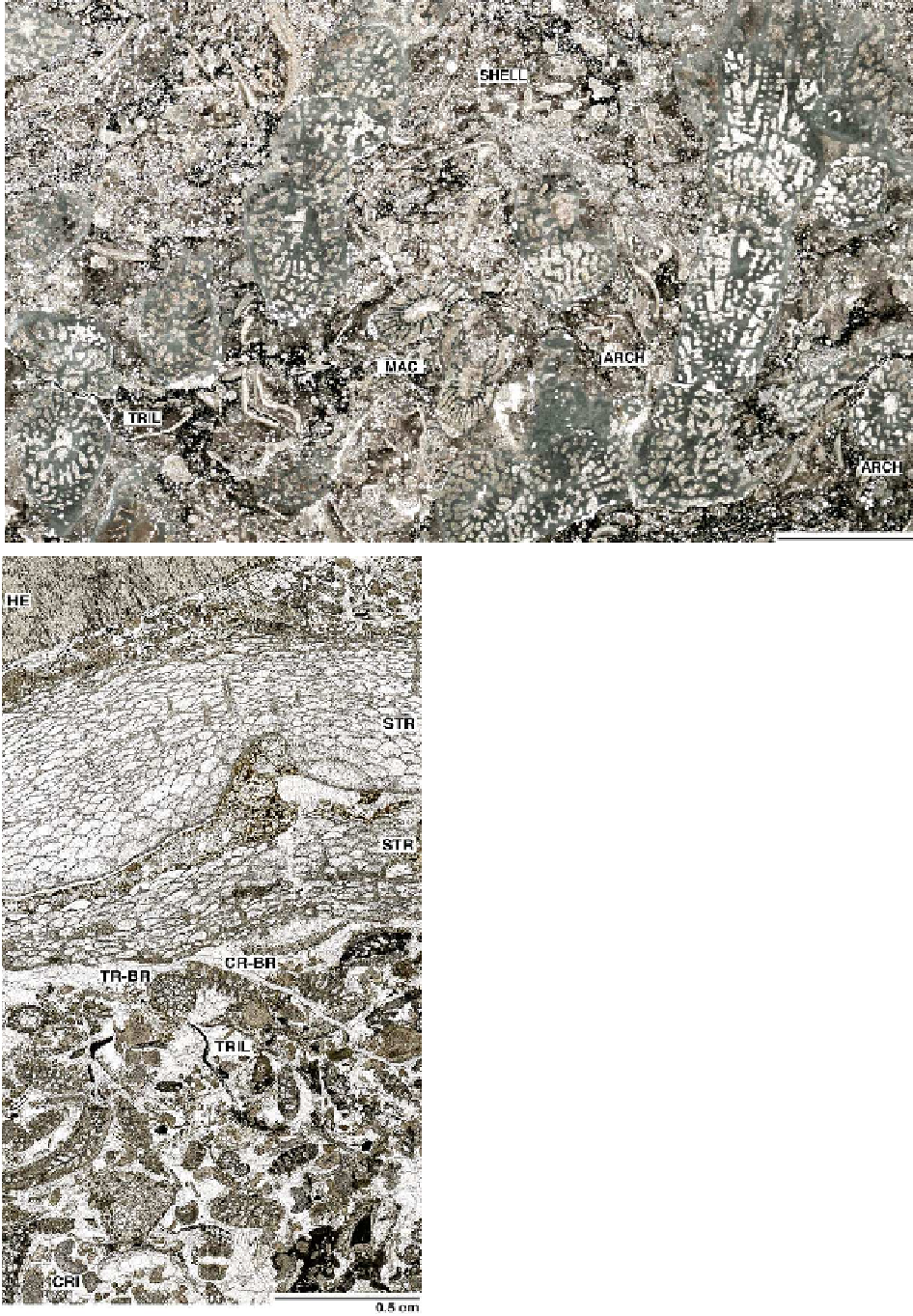Geology Reference
In-Depth Information
0.5 cm
Fig. 20.4.
Archaeocyathid bafflestone from the Early Cambrian
of Canada (Jasper National Park). Two different archaeocyathids
are present: (1) the irregular form (
Archaeocyathus
sp.) and
(2) the more regular form in the center (
?Mackenziecyathus
).
The matrix contains trilobite fragments. Quartz grains are
extremely abundant indicating a close vicinity to a landmass.
Archaeocyaths (now assigned to sponges) had a calcareous
skeleton and represent the first metazoan reef builders in Earth
History.
ARCH -
Archaeocyathus
, MAC -
Mackenciecyathus
, SHELL -
Tiny shelly material indet., TRIL - Trilobite
Fig. 20.5.
Poorly sorted, Late Ordovician reef debris limestone
(SMF 5) with large fragments of a labechiid stromatoporoid
(
?Pachystylostroma
) with two growth increments, and a heliolitid
tabulate coral (
?Acidolites
). High initial intraskeletal porosity
of the stromatoporoid. Bioclasts are abundant, mostly consisting
of debris of cryptostomate (?
Pachydictya
) and trepostomate
(
Hallopora
sp.) bryozoans, but also of trilobites, ostracods, and
crinoids. Cemented by clear, blocky calcite spar. Micrite is absent.
Crinoid fragments show syntaxial cement growth. Strom-
atoporoids, tabulate corals, bryozoans and crinoids represent most
important carbonate-producing organisms especially in reefs and
reef-related environments from the Late Ordovician to the Late
Devonian. Late Ordovician: Anticosti Island, Canada.
CR-BR - Cryptostomate bryozoan, HE - Heliolitid coral, STR -
Stromatoporoid, TR-BR - Treptostomate bryozoan, TRIL-
Trilobite, CRI - Crinoids

